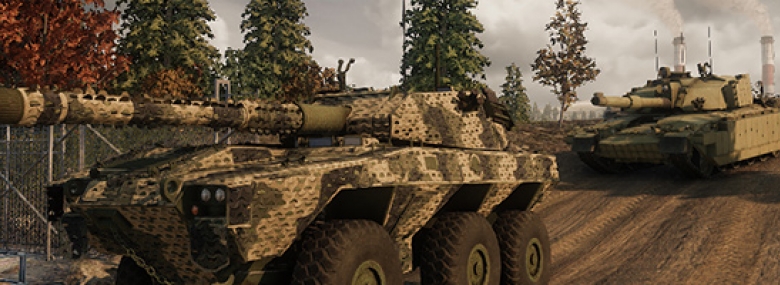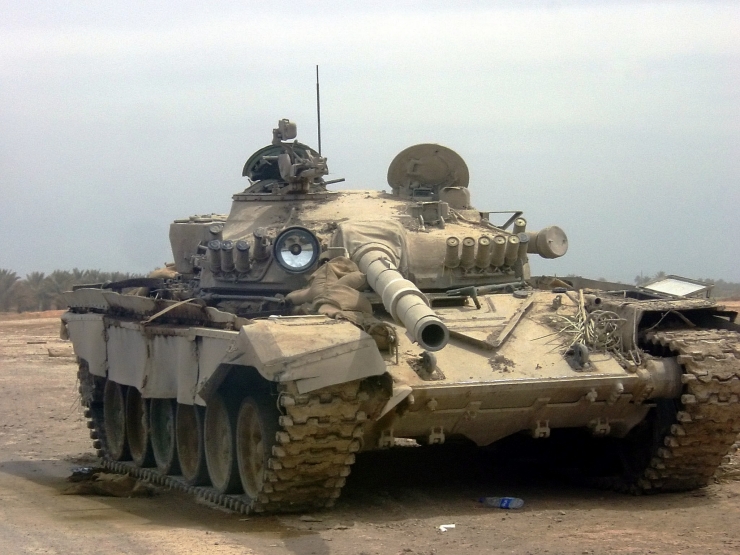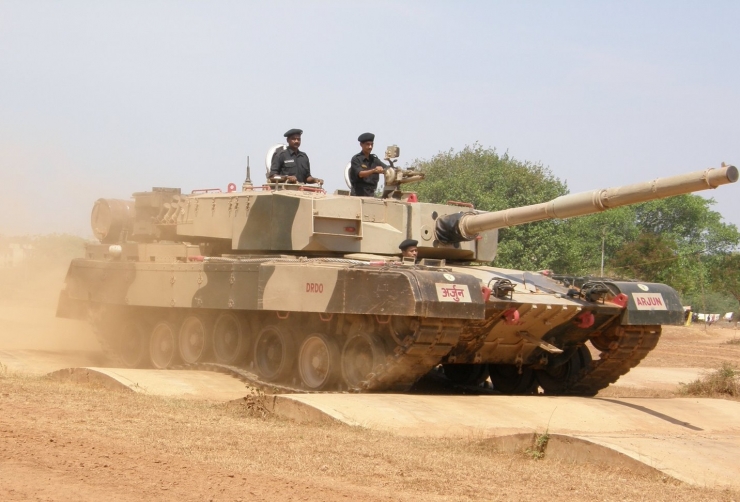
When mentioning worst tanks ever made, most people usually imagine certain pre-war or wartime monstrosities, usually the products of desperate minds and desperate measures. After the war, the situation stabilized and the extremely rapid armor development slowed down somewhat (it took only five years to progress from the tiny Panzer II, BT tank series and the M1 Combat Car to the Panther, Pershing and the IS-3), but the tank evolution never stopped.
Failed vehicles of the post-war era were plagued by different issues than the wartime ones. Instead of pursuing obviously useless concepts such as the super-heavy tanks, the most common problem was the vehicle taking too long to develop (sometimes to the point of obsolescence by the time it was finally ready) while crossing the planned budget many times over. Taking too long to develop and going over the budged does of course not guarantee a failed project – the best example would be the American M2 Bradley, a fine vehicle that however took around 20 years to develop.
There were however various “offshoots” of the existing tank design schools that did not end well. Each has its own individual background but the result was the same – a problematic vehicle that can be marked as a failure. Today, we shall have a look at some of them.
Panzer 68
The Panzer 68 was a Swiss tank, conceived as an upgrade to the relatively successful Panzer 61. Named after the year it was formally ordered by the Swiss government, at first glance this vehicle was not extraordinary - a solid tank built upon the previous design, armed with the standard NATO 105mm gun (the L7) and with sufficient armor and equipment not to lag behind its American and Soviet counterparts. Around 390 of these tanks were produced and the vehicle stayed in service between 1971 and 2003.

The problem of this tank was not its bad design but the fact that it was plagued by serious issues that (summed up) made it practically unusable in battle. In 1979, a committee was assembled to investigate the vehicle and found dozens of problems, notably:
- Insufficient NBC protection
- The fact that the vehicle has to stop before switching to reverse (limiting its ability to react on threats)
- Radio station interfering with turret controls causing the turret to sometimes randomly turn when used at full power
Possibly the most serious issue discovered was the fact that turning on the heating could cause the main gun to fire. This report caused a scandal that led to the resignation of the Swiss minister of defense. In the end however, the tank stayed in Swiss service and most of its issues were hammered out during the major overhaul these tanks underwent after the affair. The fact that in such state the vehicles were allowed to serve for almost a decade before the truth came to light does however earn them the place on our list.
Saddam and the Lion of Babylon
One of the most infamous post-war tanks is certainly the Iraqi attempt to produce their own indigenous main battle tank. Its history is actually unclear and sources differ on several aspects on the development but the origin of the tank can be clearly traced to the T-72Ms used in the Iran-Iraq war. The T-72M (also unofficially referred to as the “monkey model”) is a downgraded export variant of the T-72 main battle tank (it was stripped of all the advanced electronics and supplied by the Soviets to “friendly” countries – it also lacked the turret composite armor of the Soviet vehicles). It was not a very good vehicle - the downgrades were quite showing but when used against other poorly-trained and poorly-equipped armies (such as the Iranian one), it did achieve some success in Iraqi hands. This encouraged Saddam Hussein to pursue their “development” in order to make a “local” version.

The steel factory near Taji (built by the Germans in 1986) handled in the past the repairs of heavily damaged Iraqi T-55 and T-62 task and now was tasked with assembling the T-72Ms from imported parts (notably from Soviet Union and Poland, although it’s possible some came from former Czechoslovakia as well). The first locally-assembled T-72s were basically kitbashes from multiple sources and were roughly equal to the classic T-72Ms (one of the changes was the removal of certain shock absorbers). Some sources state these tanks were called “Saddam”.
After 1990, the embargo on Iraq became even stronger – Iraq was practically banned from importing most parts of the T-72 tank it needed to keep its armored forces running. This resulted in certain amounts of illegal parts import from various sources (mostly from Poland and Russia) and the assembly of tanks from these illegal parts. It is unclear as to how many T-72 tanks were assembled during this time but these tanks were downgraded even further (for example by replacing the laminated frontal hull plate with a simpler steel spaced armor plate and by removing some of the T-72M electric devices as well). Additional anti-HEAT rubber protection of dubious quality was also added but it seems there was not much unification in the vehicles produced - some had devices the others did not, there are for example rumors of some Belgian thermal sights being used as well as various types of 125mm ammunition for the main gun. These downgraded T-72s became known as the “Asad Babil” (or “Lion of Babylon”).
How the Iraqi armor fared in the Gulf War is widely known – most Iraqi tanks performed very poorly and last of the Lions were knocked out during the Iraq war in 2003. One thing is certain however: downgrading a downgrade is never a good idea, making the appearance of the Lion of Babylon on our list quite justified.
Arjun
The Indian Arjun main battle tank project (named after one of the Mahabharata characters) is one of the worst late 20th century failures and a good example of what happens when the development takes too long. The entire project started after 1971 as one of the results of the Indian experience from the Indo-Pakistani war. The goal of the project was at first to create a main battle tank that could be completely produced in India and would be suitable for the type of warfare that could be expected in the region. The first tanks were supposed to be delivered to the units in 1985 and were expected to serve until 2000 (15 years), replacing the wide assortment of tanks serving in the Indian military.

In the end, the project turned out to be too ambitious for the then-undeveloped Indian military industry. What started as a 40 ton battle tank with a 105mm gun would become much heavier and better armed midway through the development since the army requested this tank to be able to deal with the newest generation of main battle tanks, which in turn required upgunning it to 120mm. The industry was not up to the task and because of the self-sufficiency demand many components had to be developed from scratch, causing more and more delays.
The entire development of the tank took around 30 years and did cost 20 times what was expected when the project started. Early prototypes were tested around 1989 but failed the trials due to insufficient gun accuracy and consistent engine overheating and the same result repeated almost a decade later. The program went on but the failure of the Arjun prompted India to buy and license-produce the Russian T-90 tank instead. The Arjun was eventually upgraded to the Mk.II variant, allegedly dealing all the issues of the previous vehicle but how many will be produced in total remains to be seen.
Honorable mentions
No article about bad armored vehicles can be complete without mentioning the M551 Sheridan (that eventually overcame its worst issues however) and the MBT-70 program that turned out to be hideously expensive and overcomplicated. Some of the worst tanks are produced by the technology-starved North Korea and there are some historically very interesting but likely useless vehicles produced on Cuba. In time, more less-developed countries will without any doubt start their own indigenous armor programs (the first attempts are already there) and we will see more awful armor produced due to the lack of experience.






